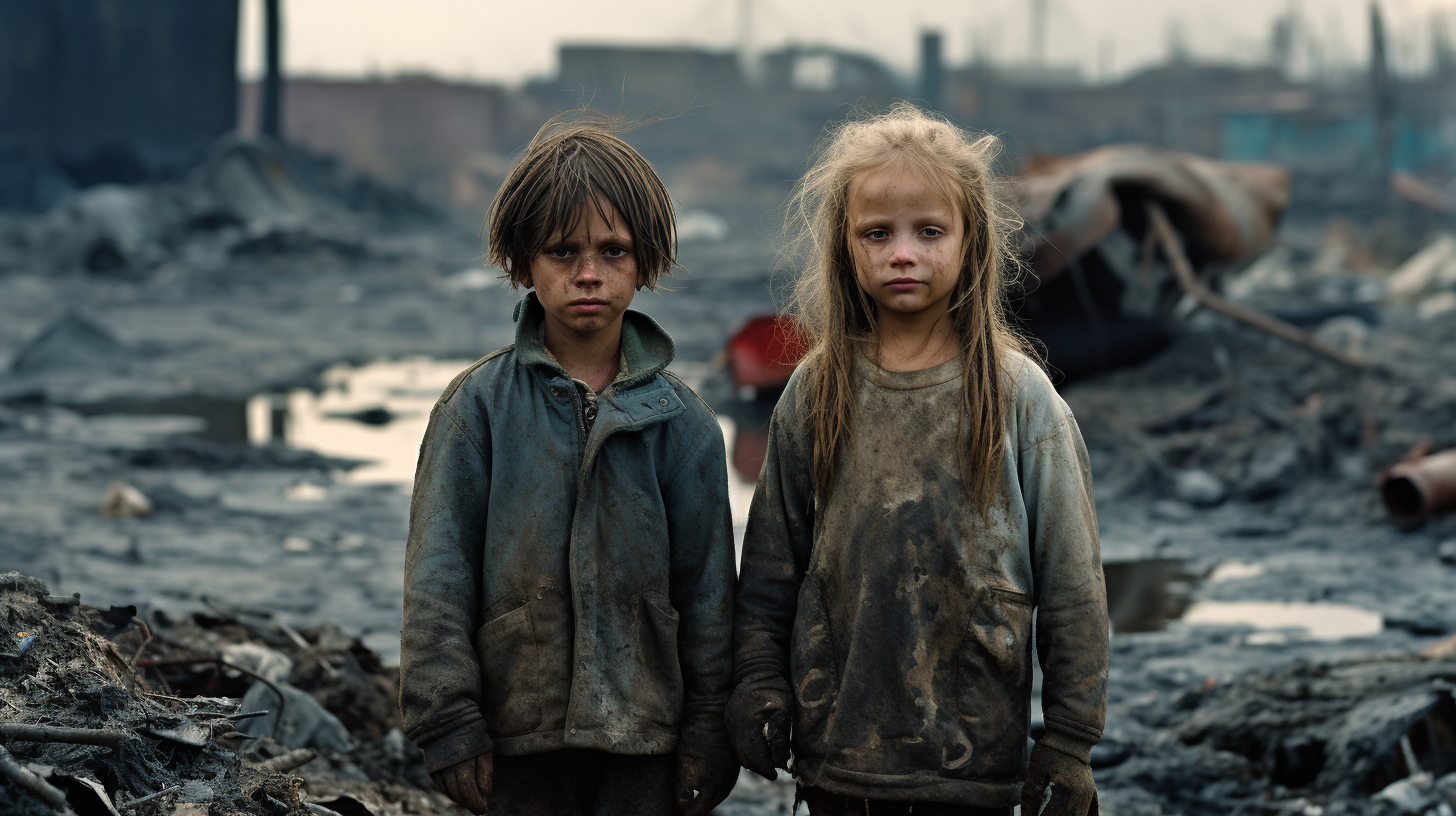In the ochre-colored dust where playgrounds once thrived, the Children of the Wastes stand as stark memoirs to the green past – etching their stories in the wind with sticks that once were trees. It is here, in the aftermath of habitual environmental ravishing, that innocence is not stolen, but surrendered – a necessary forfeit in the face of a dystopian existence.
Our tale unfurls in the lands that bear witness to the crescendo of humankind’s planetary neglect; no lore of enchantment, no beasts of splendor – just the omnipresent backdrop of desolation where remaining rather than living engulfs every minuscule fragment of a child’s day. Plastic mountains tower in the distance, mocking the obsolete skyline of a dead metropolis, once bustling, now nothing more than a concrete graveyard.
‘Why are the skies always crying, mama?’ A child’s voice pierces the monotonous drone of acid rain, drip, drop, drip onto the world’s rusted canvas. Their mother, eyes hollow as the fishless seas, whispers back, ‘Because we didn’t listen, love. We didn’t listen.’ It’s an elegy, not just for the sky, but for the hope we’ve quashed, the dreams we’ve obliterated.
In the face of such decay, our children adapt. Evolve. Their games have transformed from hide and seek in sun-kissed meadows to scavenging quests among the dregs of old electronic hideouts – a testament to surviving rather than thriving. They unearth relics of a technologically bound past and repurpose our discarded devices into survival tools. This is education in the Dystopian Era, where every abandoned gadget is a potential lesson in resilience.
Through a mosaic of poignant interviews and heartbreaking photographic journeys, we’re presented with the lives of children who’ve never known a breath of untainted air. We hear from Lila, the 8-year-old who has mastered the art of filtering water through a patchwork of old textiles – a skill as vital as arithmetic once was. From Jonas, whose playground is a skeleton of a once-verdant forest, where he and his friends speculate on the rumored hues of green that their grandparents spun tales about.
But even within this squalor, children carve out an existence. We spotlight enclaves of laughter and fleeting sparks of innocence within the frame of desperation. They chase each other through alleys of corroded dreams, laughter echoing with a timbre of defiance. Yet, we must ask ourselves – is this the childhood we envisioned for the heirs of Earth? This chronicle illuminates the resilience of youth in a world where resilience has become the currency of life.
This article does not aim to instill hope; it pains to say that in this narrative, the concept of hope seems to play the role of a far-reaching mirage. Instead, it shows that our children’s adaptability to this world comes at the cost of their right to naivety. The environment we crafted for them is not one brimming with potential or exploration, but one nudging them ever closer to a maturity inherited prematurely.
Their voices, while brave, articulate questions that resonate with all who dare listen. ‘Are you there, World? It’s me, the child of your doing. Will you hear my plea?’
Thus, in the shadow of the article ‘Heirlooms of Ruin: What We Leave Behind’ we juxtapose the literal legacies we’ve left to our progeny – a testament to our failure as stewards of the world. As we document these young ones forging their paths in the new world order, we realize their lives are lived in the echoes of our environmental apathy.
Theirs is a dystopia devoid of the luxury of hope, a reverberation of our past decisions – a world of children shaped, not just by the present wasteland, but by the fading fingerprints of our missed opportunities to avert this grim parody of existence.
